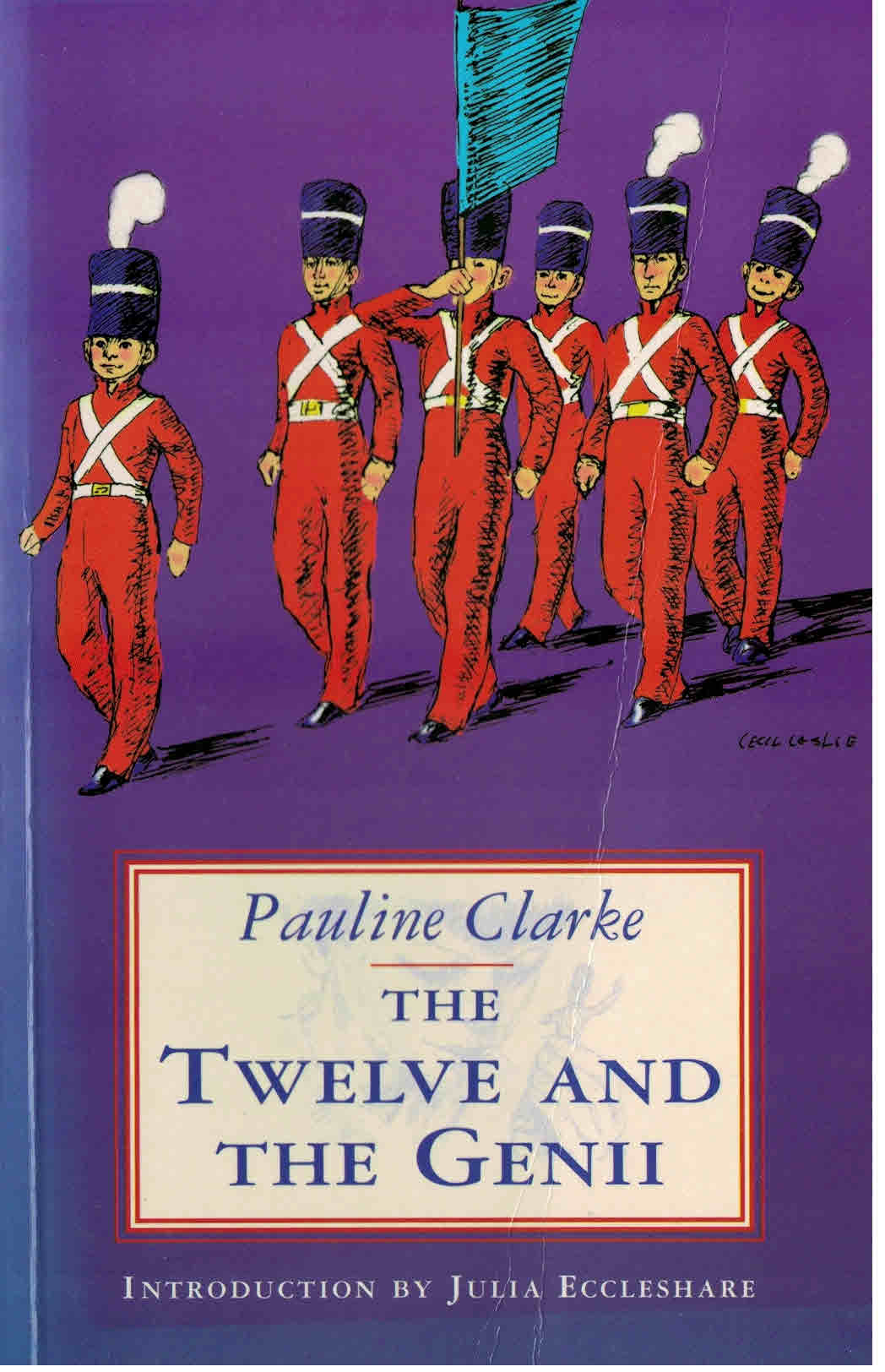
Classics in Short No.127: The Twelve and the Genii
2017 was the bi-centenary of Branwell Bronte’s birth, good reason to open up Pauline Clarke’s ingenious tribute to his talent, The Twelve and the Genii.
Investigating the attic
of an old farmhouse into which the family has just moved, eight-year old Max finds beneath a floorboard a collection of toy soldiers wrapped in a torn rag. There were twelve of them and he set them up as a small regiment on the floor.
So much for that;
but later on, thinking to add a military air to the parade, he beat a rhythm on an Ashanti drum, an heirloom of the family, that also had been stored in the attic. The result was electrifying, bringing the leader of the soldiers to life and causing him to revivify his troupe after their long furlough and get them into parade-ground formation. It was clearly a drill that they had undertaken before but Max’s startled response had the effect of returning them to frozen immobility.
Wise beyond his years,
Max realizes the care he must bestow upon these unlikely house-mates, and as he wins their confidence he discovers them to be a platoon of comrades – a ‘twelve’, battle-scarred from what they claim to be their military experiences in Africa – indeed, among the Ashanti. They, in turn, recognise Max to be a Genii – Maxii – equivalent to four earlier such who had accompanied them many years before and had imagined them into the African adventure.
Inexplicable
though this conjunction of souls may be, and determined though Max is to embrace it as his own secret, complications cannot help but arise. His family are tolerant of what seems a new childish obsession, but the subject of the soldiers has been taken up by them. His older sister, ‘on purpose by accident’, discovers the Twelve while they are engaged in a ceremonial march-past and, seeing such tangible evidence of their presence demands her belief and she joins Max as a guardian (Janeii) of the secret.
The farmhouse however,
the seat of activity, lies very close to the village of Haworth in the West Riding of Yorkshire where stands the Bronte Parsonage Museum and as the children’s guardianship of the Twelve proceeds so exterior connections are made. The friendly local parson is a ‘Brontyfan’ (deemed by Max at first to be some sort of prehistoric animal). The Bronte children’s interest in toy soldiers is revealed, since Max’s mother – also a fan – has a copy of Branwell’s manuscript essay ‘The History of the Young Men’, and here Max finds indisputable proof that the attic soldiers had come from the Parsonage and from the tutelage of his genii predecessors: Branii, Tallii, Emmii, and Annii.
A juicy coincidence
is now tossed into the brew. An American professorial Brontyfan writes to the local paper, suggesting that some local family may be the unwitting owners of the soldiers who have a recognised place in Bronte literature. He doesn’t see why the treasures may not have survived and, by offering £5000 to buy such a find (a sum considerably more significant fifty-five years ago when the book was written than now) he sets in motion a plot driven by cash-centred local sentiments. The children’s love of their diminutive charges, each of whom is shown to have his own individual character, must be played out under the skies of a real world.
The success of the Twelve
in finding their way back to their true home is matched by the success of the Genii Paulinii in persuading us to cheer them on. Her invention is rooted in a profound sympathy for and knowledge of those closeted children for whom the soldiers were themselves almost living characters and her story seems but a vehicle for carrying their adventures into the present. (For much of the later part of the story we follow the Twelve’s own plans for the journey home, made indeed under guidance from the attendant Genii, who nonetheless have the wisdom to allow them to determine their own progress.)
In the larger scheme of things,
there is a temptation to draw parallels with other narratives that bring Lilliputian people, dolls, or toys, among what the soldiers see as the Monsters of grown people. One thinks particularly of the threats and terrors that serially confront the Borrowers while acknowledging too the less fraught shenanigans of the Racketty-Packetty House crowd or the wanderings of poor Cecco and Bulka.
But here
the tale is overlaid for readers who are beyond children’s books with the tragedy of the Genii to whom the Twelve owe their being: Branii, alias Branwell Bronte. His presence is touched on in the story, not least when Butter Crashey extols the ‘love … artfulness, and ingenuity’ with which he endowed his toys but it is for us now to know the tragic fate that engulfed him after their comradeship had ended. And we are never told how the Twelve came to be tucked up in a rag under the floorboards of that farmhouse.
Copies of The Twelve and the Genii by Pauline Clarke, published by Jane Nissen Books 978-1-9032-5209-3, are available from Amazon.
Brian Alderson is founder of the Children’s Books History Society and a former Children’s Books Editor for The Times. His book The Ladybird Story: Children’s Books for Everyone, The British Library, 978-0-7123-5728-9, £25.00 hbk, is out now.




